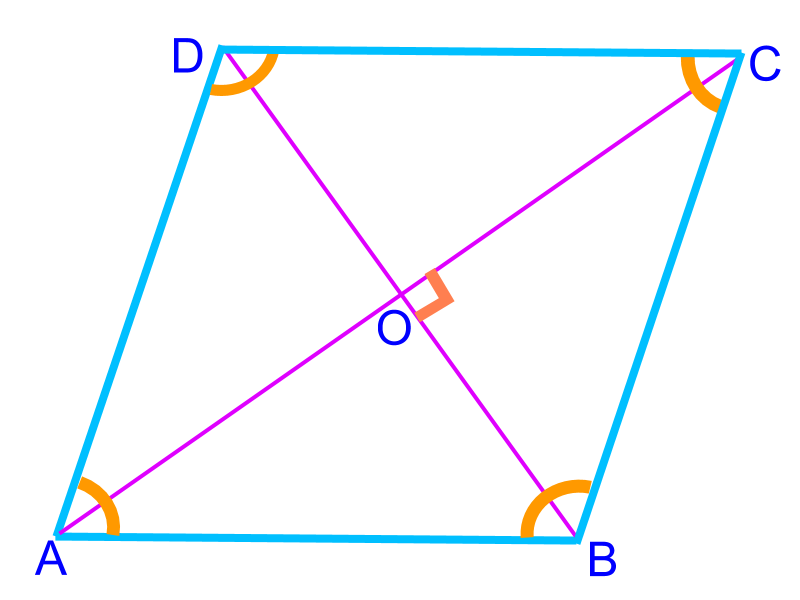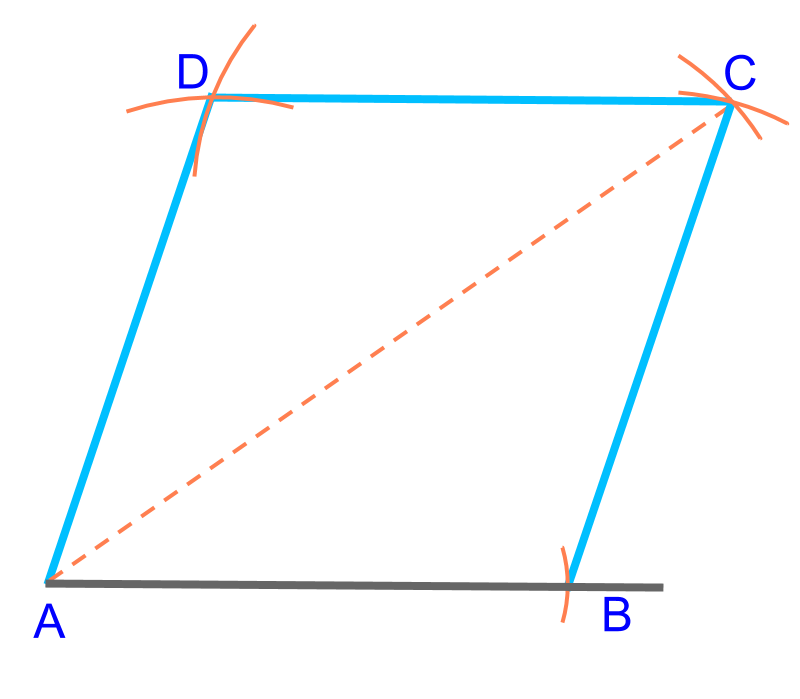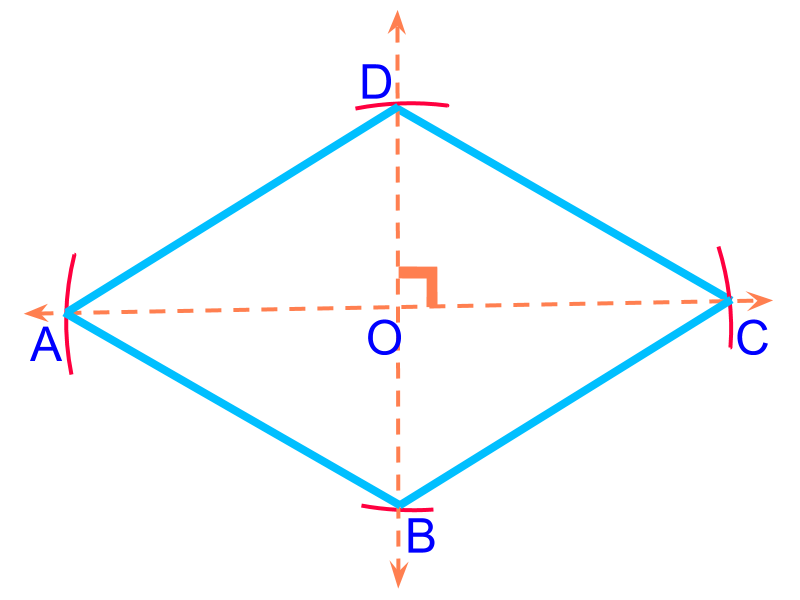
what you'll learn...
overview
In this page, constructing rhombus is explained. It is outlined as follows.
• Properties of rhombus is explained
• The number of independent parameters in a rhombus is 22
• For a given parameter, construction of rhombus is approached as combination of triangles (sss, sas, asa, rhs, sal) and using the properties of rhombus.
understanding rhombus
A rhombus is a parallelogram with all sides equal.

A quadrilateral is defined by 55 parameters. A parallelogram is defined by 33 parameters. And in a rhombus, the following properties provide additional dependency of parameters
• All sides are equal (and parallel)
• the diagonals perpendicularly bisect
• opposite angles are equal
• adjacent angles are supplementary
These properties cause one parameter dependent on other parameters and effectively, a rhombus is defined by 22 parameters.

To construct a rhombus, a side (¯AB¯¯¯¯¯¯AB) and a diagonal (¯AC¯¯¯¯¯¯AC) are given. This is illustrated in the figure. To construct, consider this as two SSS triangles ABC and ACD

To construct a rhombus, a side (¯AB) and an angle (∠B) are given. This is illustrated in the figure.
To construct the specified rhombus, "Consider this as two SAS triangles ABC and BAD". Use the property ∠A+∠B=180∘ to find the second angle.

To construct a rhombus, two diagonals (¯AC, ¯BD) are given. This is illustrated in the figure.
To construct the specified rhombus, "Consider this as two SAS triangles DOC and AOB". Use the property that the diagonals perpendicularly bisect and mark the vertices at half diagonals.
summary

Construction of Rhombus :
Properties of Rhombus
• All sides are equal (and parallel)
• the diagonals perpendicularly bisect
• opposite angles are equal
• adjacent angles are supplementary.
The formulations of questions
• 1 side and 1 diagonal
• 1 side and 1 angle
• 2 diagonals
use properties to figure out dependent parameters and look for triangles.
Outline
The outline of material to learn "Construction / Practical Geometry at 6-8th Grade level" is as follows.
Note: click here for detailed outline of "constructions / practical geometry".
• Four Fundamenatl elements
→ Geometrical Instruments
→ Practical Geometry Fundamentals
• Basic Shapes
→ Copying Line and Circle
• Basic Consustruction
→ Construction of Perpendicular Bisector
→ Construction of Standard Angles
→ Construction of Triangles
• Quadrilateral Forms
→ Understanding Quadrilaterals
→ Construction of Quadrilaterals
→ Construction of Parallelograms
→ Construction of Rhombus
→ Construction of Trapezium
→ Construction of Kite
→ Construction of Rectangle
→ Construction of Square